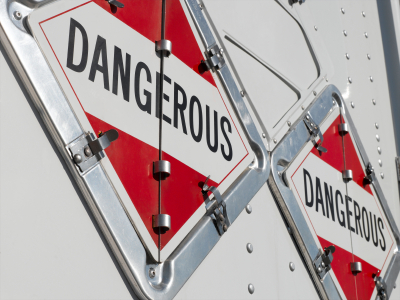Small truck safety extolled
 Isuzu director Phil Taylor has reflected on the importance of safety for small truck fleets.
Isuzu director Phil Taylor has reflected on the importance of safety for small truck fleets.
“By nature, smaller fleets are dealing with fewer resources, and unfortunately this can affect their ability to form and enforce strict safety policies and procedures,” Mr Taylor said.
“One option available to them, however, is to emulate the strategies used by larger companies.”
He said smaller fleets often have to deal with safety issues as they happen, on a case by case basis.
Safe Work Australia figures show around 80 people die each year while working in or around trucks, 39 per cent of which are killed in single-vehicle incidents.
“The statistics on single-vehicle deaths paint in a very sobering picture,” Mr Taylor said.
“They indicate that rates of fatigue and speed are still much high. Naturally, the same can be said of any factor that contributes to a fatality, but these figures are particularly sad considering issues like speed and fatigue can be dramatically reduced through cultural changes within a company.
“We owe it to ourselves and our colleagues to do our utmost to improve this situation – to do everything in our power to effect real change in the industry.”
The National Transport Commission (NTC) says trucks and buses are involved in 18 per cent of total road deaths, but car drivers are at fault in 82 percent of fatal accidents that involve a truck and another vehicle.
“Just as we’ve seen the Australian Government reduce overall road deaths through changing the broader culture around drink driving, speeding, and seatbelts, we must target workplace cultures to improve our industry’s performance,” Mr Taylor said.
“It’s simply a matter of finding the policies that make drivers genuinely safer, then communicating their importance to companies of all sizes.”
Mr Taylor offered advice including checking brakes, transmissions, steering, wheel bearings and tyres to ensure each vehicle is running at optimum condition before any trip. Equally important, he said all policies and training programs should be documented, employee expectations made clear, and consistent records kept on all related material.
“These initial steps set a positive baseline for promoting a productive safety culture, allowing fleet owners to then add their own, application-specific points,” he said.
“And one of the biggest boosts employers can give to their safety potential, and future safety record is to provide their drivers with adequate training.
“A good driver training program offers more than just the skills to control a vehicle and handle a problem situation – it focuses on improving vehicle familiarisation and helping drivers develop the attitude and awareness to avoid the problem in the first place.”
Mr Taylor said telematics, becoming common in larger companies, help reduce the workplace toll as well.
“Telematics gives fleet managers a direct line to the vehicle allowing them to gather information on driver behaviour such as over-revving, extreme acceleration, and braking,” said Mr. Taylor.
“Assessing this data, they can identify where improvements can be made.
“At Isuzu, we’ve conducted case studies on customers using our Connect and Connect Plus telematics and seen marked improvements in driver habits.
“These adjustments result in safer driving and impressive boosts to efficiency.
“There has been a direct correlation found between safer driving and reduced fuel use.
“It also reduces wear and tear on the vehicles, resulting in less required maintenance and lower overall operating costs. Vehicles last longer in the fleet, and employees stay longer in the business because they know their safety and wellbeing is highly valued.
“Lower fuel consumption also means a reduction in emissions. So even the environment benefits.
“With these overwhelming advantages, it behoves smaller organisations to do everything in their power to improve safety levels. And one of the quickest routes to these improvements is tapping into the wisdom of the bigger operators.”







 Print
Print